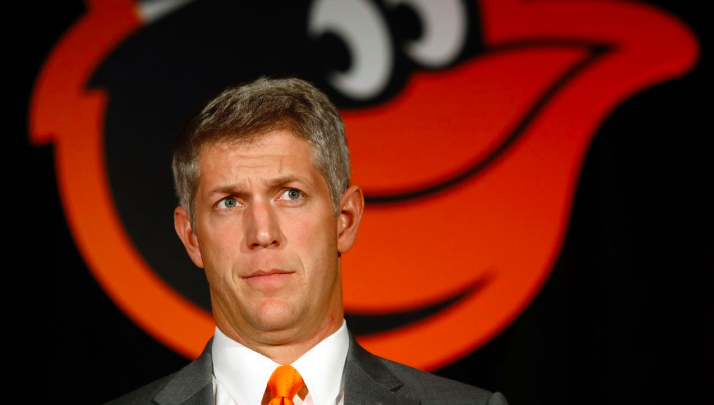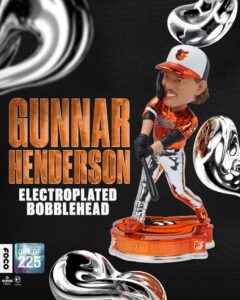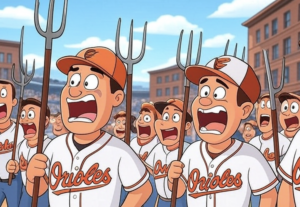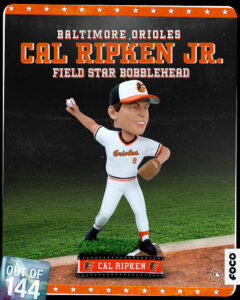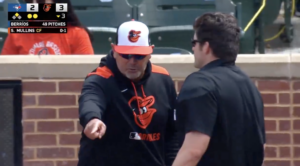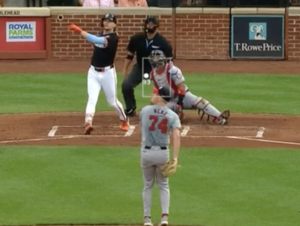(Ed note: An earlier version of this post attributed it to Derek Arnold. Aidan Griesser is the correct author. We apologize for the error.)
Sitting at 45-92 late on Monday night, there’s no question that the Orioles…well, suck. They’re not easy to watch at all, and quite frankly, I’m about ready for the season to end. It’s only natural that all of our minds are solely focused on the Baltimore Ravens at this point.
However, perhaps because of how awful the summer has been, what’s been going through my mind becomes a legitimate hot take.
Leading up to the campaign and at its beginning, something I stressed alongside many members of the Baltimore media/blogosphere was that everything had to be kept in perspective. As we know, this team is rebuilding. Unfortunately, though, it’s often difficult to remember that.
Yet, as I sit here trying to take a step back and look at the season in the big picture, I can’t help but feel that the 2019 season – under the context of the rebuild – has been an astounding success.
Allow me to explain.
The Orioles were never going to win this year. If you’ve heard any of Brandon Hyde’s press conferences you’d completely understand that was never the goal. I want to shy away from saying the team was tanking, but hey, even if the players weren’t, the organization basically was.
Keeping that in mind, the goals of Orioles brass has to have been to grow the farm system, establish a legitimate pipeline, discover fringe prospects who can become contributors deep into the rebuild, and – whether they admit it or not – secure a top-3 draft pick next year.
According to my internal calculations, each of those has happened, at least as things stand on September 3rd.
First, as was loudly brought to our attention mid-summer, the Orioles minor league system has improved drastically since last year, and it might be the best it’s been in my life (21 years).
In drafting Adley Rutschman, the O’s brought in a cornerstone talent who should be able to lead the team back to relevance and be a true face of the franchise. Beyond Rutschman, though, Elias added other prospects in the draft like Gunnar Henderson and budding star prospect Toby Welk, amongst many others. The Orioles signed the vast majority of their draft picks, too, continuing to add depth, if not major league talent.
[Related: The Payoff Pitch – Welk What Do We Have Here?]
Outside of the draft, the new mindsets brought to the game by Elias, Sig Mejdal and company have clearly paid dividends for a number of players. To name three off the top of my head, I’d say that these improvements are especially evident in Michael Baumann, Cody Sedlock and Mason McCoy, though I’m sure there’s many more you could mention in the comments.
While I would say that the one weakness in this developmental first season of the rebuild was the fact that the Birds weren’t able to shift major leaguers off for additional minor league talent, I think the new faces we’ve seen burst onto the scene offset that in a way, especially when the system is thriving despite down years from players like Cedric Mullins, Austin Hays and Yusniel Diaz.
(Luckily, that hasn’t plagued Ryan Mountcastle, who’s truly knocking at the door.)
Second, Mike Elias has done a terrific job getting the international scouting pipeline off the ground, bringing in a huge group of young players on July 2nd and trading for a few more from Boston in exchange for Andrew Cashner.
Clearly, the new regime is committed to bringing international talent into the fold, which is refreshing and should be impactful down the road.
Third, at the major league level, it will continue to be important to uncover diamonds in the rough, and I believe the Orioles have actually had terrific luck in doing that this year.
When the O’s broke camp, Hanser Alberto was a surprising member of the team. All he’s done is impress, batting .323 in total and an incredible .420 against lefties. In July, Alberto was a serious trade candidate, which is shocking if you think about it. He might not be in the long-term plans for Baltimore, but he ‘will certainly play a role in the rebuild.
Similarly, while pitching has been a major issue throughout, John Means was a solid player for the Orioles and looks the part of a back-end starter. I’ve talked about him enough already, but I really think Means has the right demeanor to make a mark and could stick around until the team turns itself around.
Later in the year, Anthony Santander burst onto the scene and might be the Orioles second-best player right now (behind Jonathan Villar, who I wrote about last week). Santander has been something else since returning to Camden Yards, hitting .293 with 16 homers and 47 RBI in just 76 games. If there’s any player for O’s fans to be excited about lasting over the next five years or so, it might just be him.
However, if there’s anyone else to be ecstatic about, it’s Hunter Harvey, who’s finally made his way to the mound in Baltimore. Honestly, even if Harvey isn’t considered a fringe prospect, he’s been nothing short of electric and deserves a spot in this article. It’s a short sample size, for sure, but I have no doubt about the potential here.
In my mind, there’s so much that’s developed this year that makes the season a success in the context of the rebuild. And, perhaps most importantly, because the team is so bad they’ll have another top prospect joining the system and making us even more excited.
Ultimately, bringing in that kind of energizing talent is the biggest piece of the puzzle, but for all they could do in one year, Orioles fans have to be happy.

